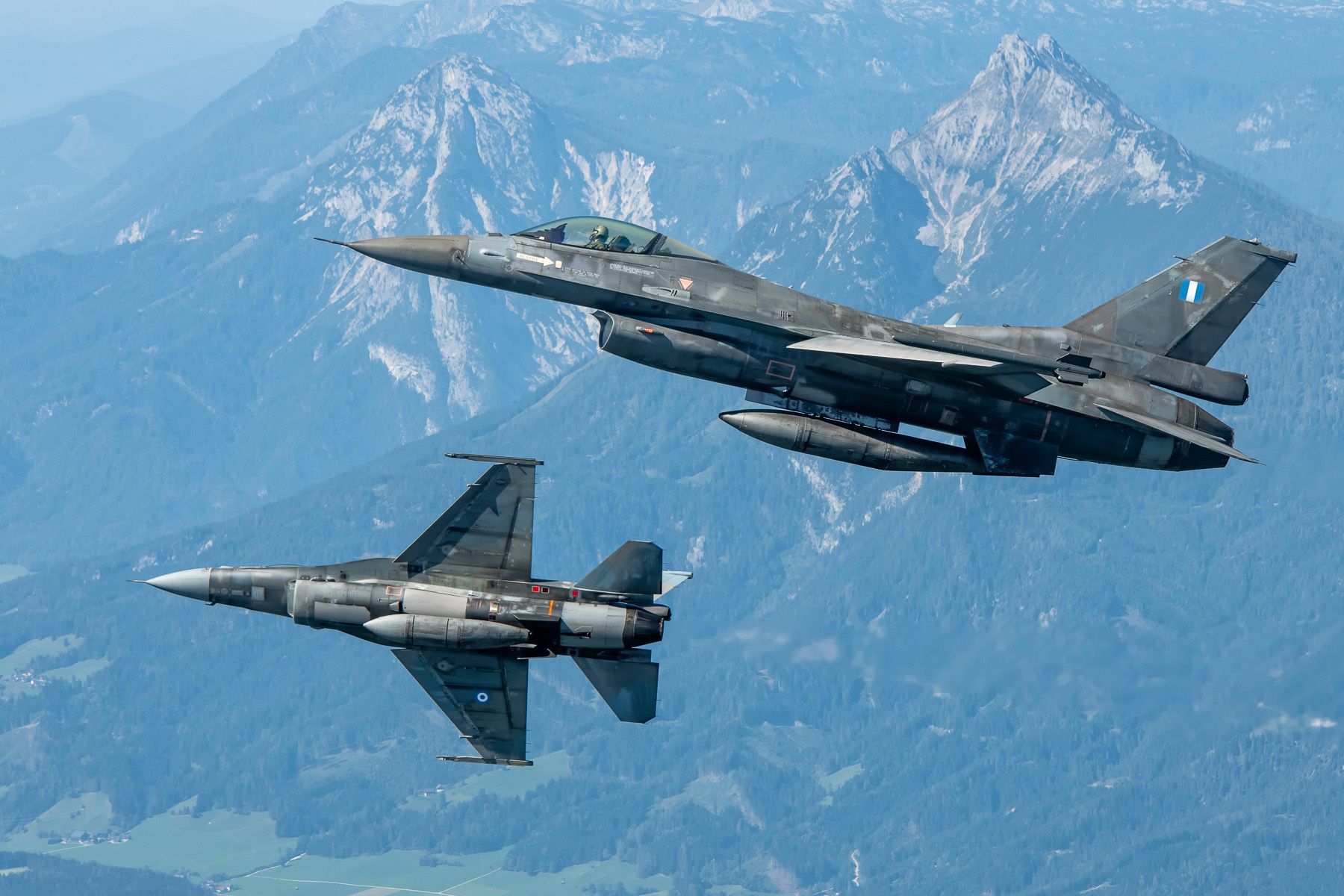The AirPower 24 airshow at Zeltweg, Austria was attended by several display teams. One of these was the ‘Zeus’ Demo Team from Greece. Here we present an air-to-air photo feature of the F-16C Block 52 demo and spare aircraft that visited this event.
Text and photos: Emiel Sloot
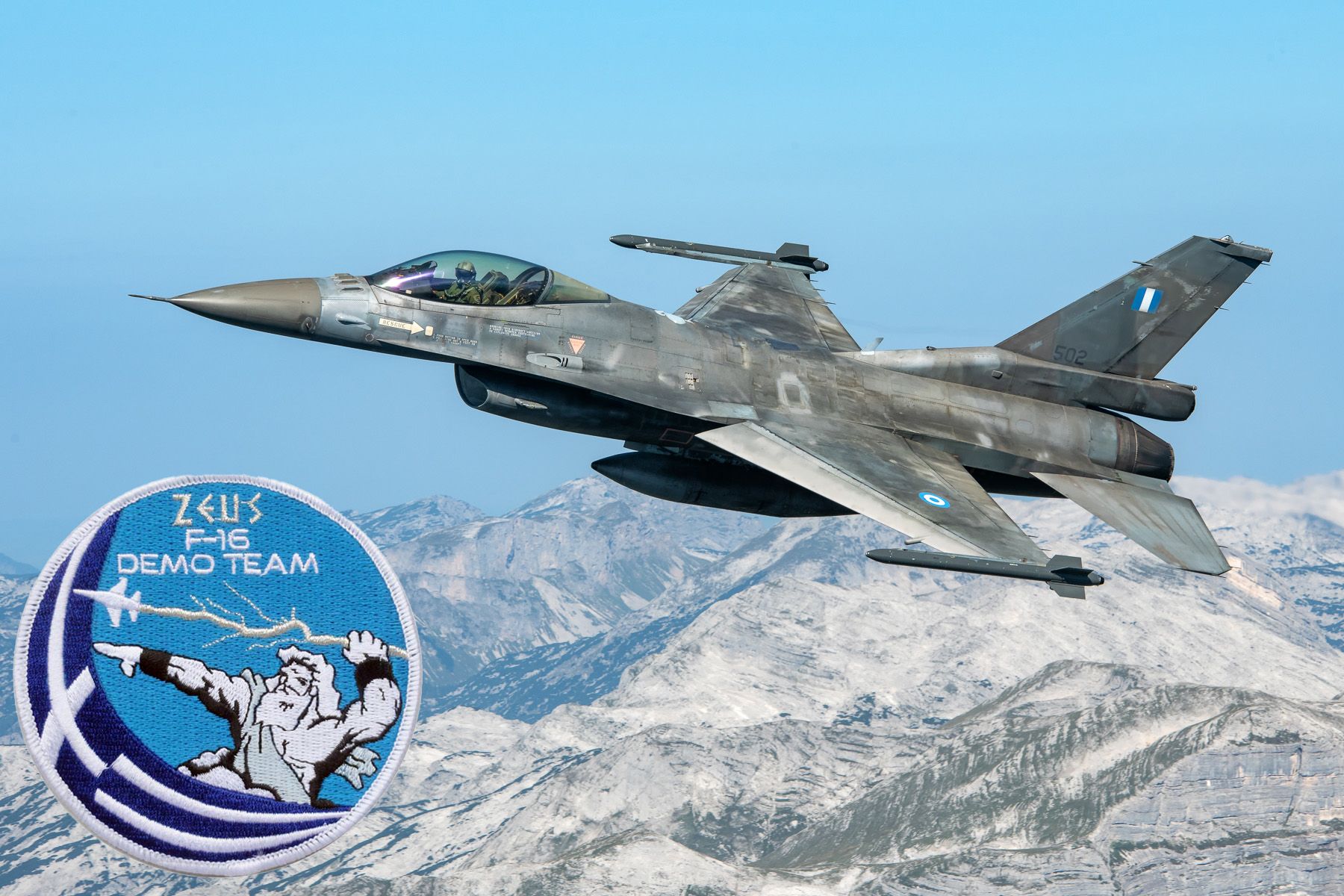
Zeus
The Hellenic Air Force F-16 Demo Team ‘Zeus’ was established early 2010, and flew their first aerial demonstration over Tanagra air base near Athens on 7 November 2010. The call sign ‘Zeus’ obviously refers to the father of the Olympian Gods of the ancient Greek mythology. The team acts as an ambassador for the country during events such as airshows, demonstrating the skills of the air force. Three different profiles can be flown depending on the weather: a high show, a low show or a simple flat performance. The show typically lasts for some 12 minutes, and for the 2024 season, two pilots have been assigned to the team, being Capt. Christos-Paris Christos of 340 Mira ‘Aleppou’ and Capt. Georgios Sotiriou who is part of 343 Mira ‘Asteri’. Both their squadrons are based at Souda on the island of Crete.
For demo purposes, a regular F-16C Block 52 is used as ‘Zeus’ currently does not have an aircraft with a special colour scheme at its disposal. The aircraft can be fitted with or without CFTs for the display.
Although both demo pilots reside at Souda, the ‘Zeus’ Demo Team brought two F-16C Block 52 aircraft belonging to 337 Mira based at Larissa to Airpower 24. These were serialled 502 (FMS 99-1502) and 532 (99-1532). 337 Mira ‘Fantasma’, as part of 110 Ptéryga Máchis (110 Combat Wing), previously operated the F-4E Phantom II until 2006, and became operational with the F-16C Block 52 one year later as the third Greek squadron regarding Viper variant. The squadron was established in 1948 at Elefsis and subsequently flew the Supermarine Spitfire Mk. IX, Republic F-84G Thunderjet, North American F-86D Sabre, Northrop F-5A Freedom Fighter and the McDonnell F-4E Phantom II until converting to the Lockheed-Martin F-16C/D Block 52 Fighting Falcon. Some more background information on Greek F-16s is presented further below. First, we hope you enjoy some of our images on ‘Zeus’ over Austria. Note that the weathered camouflage works out pretty well over the mountains.
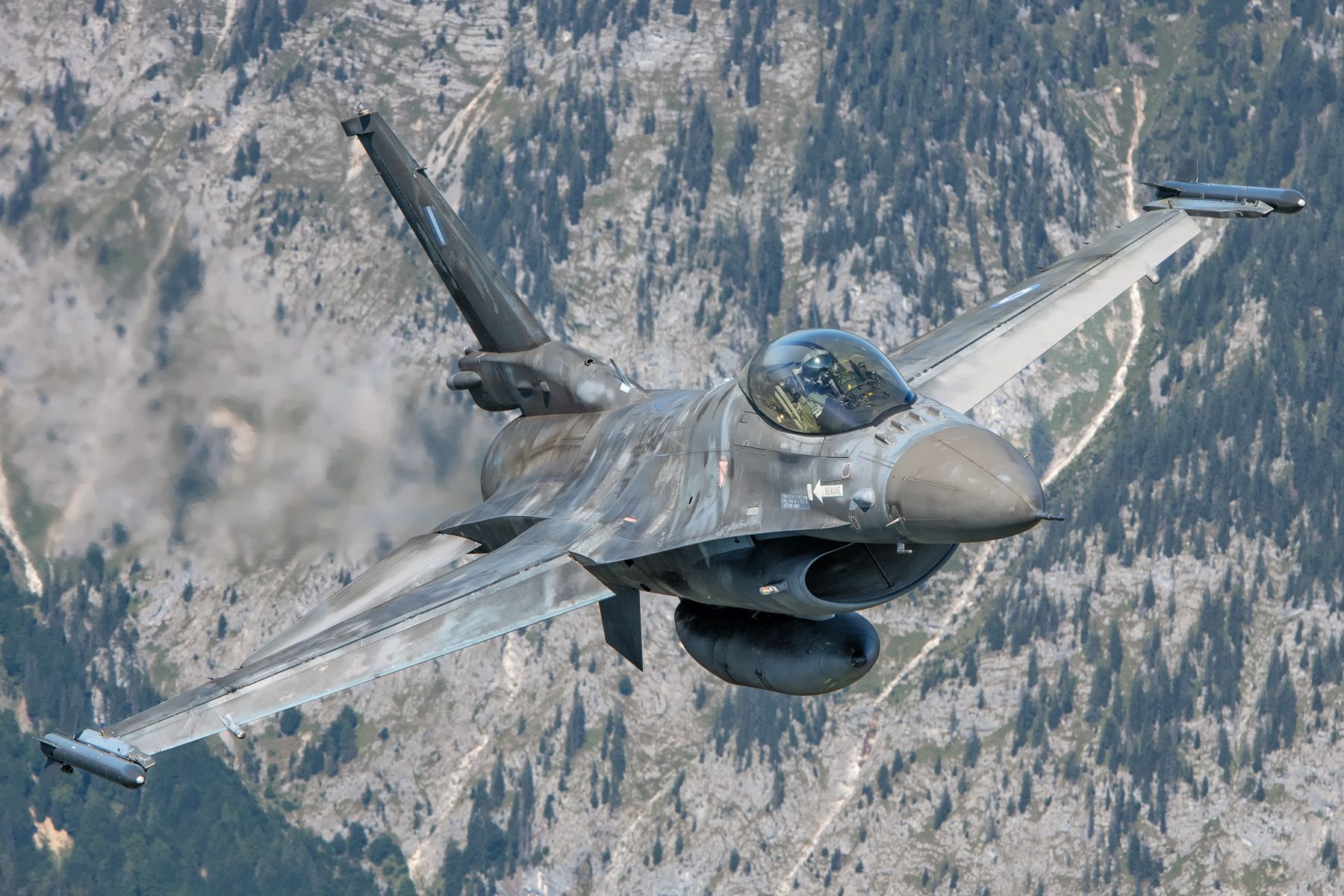
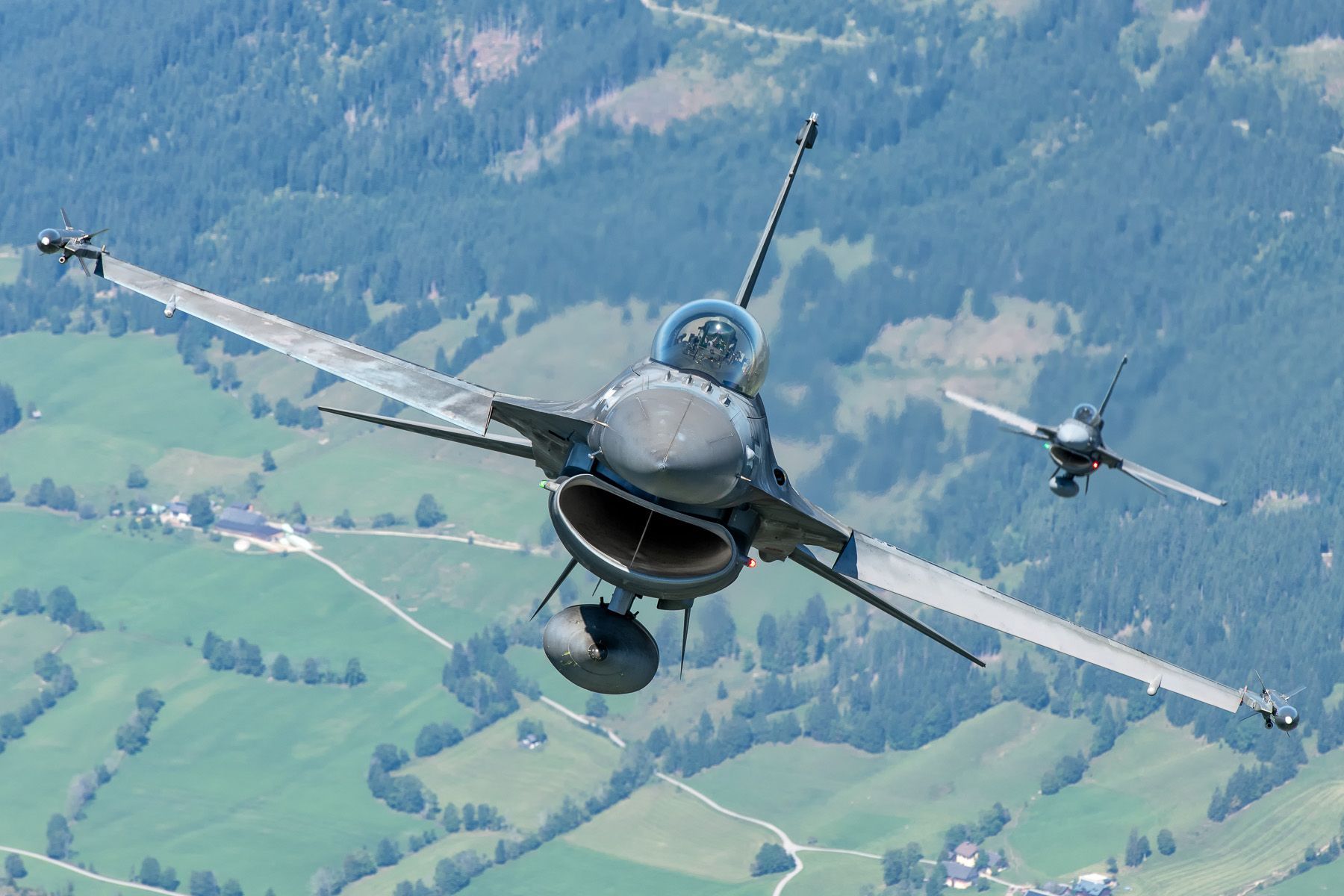
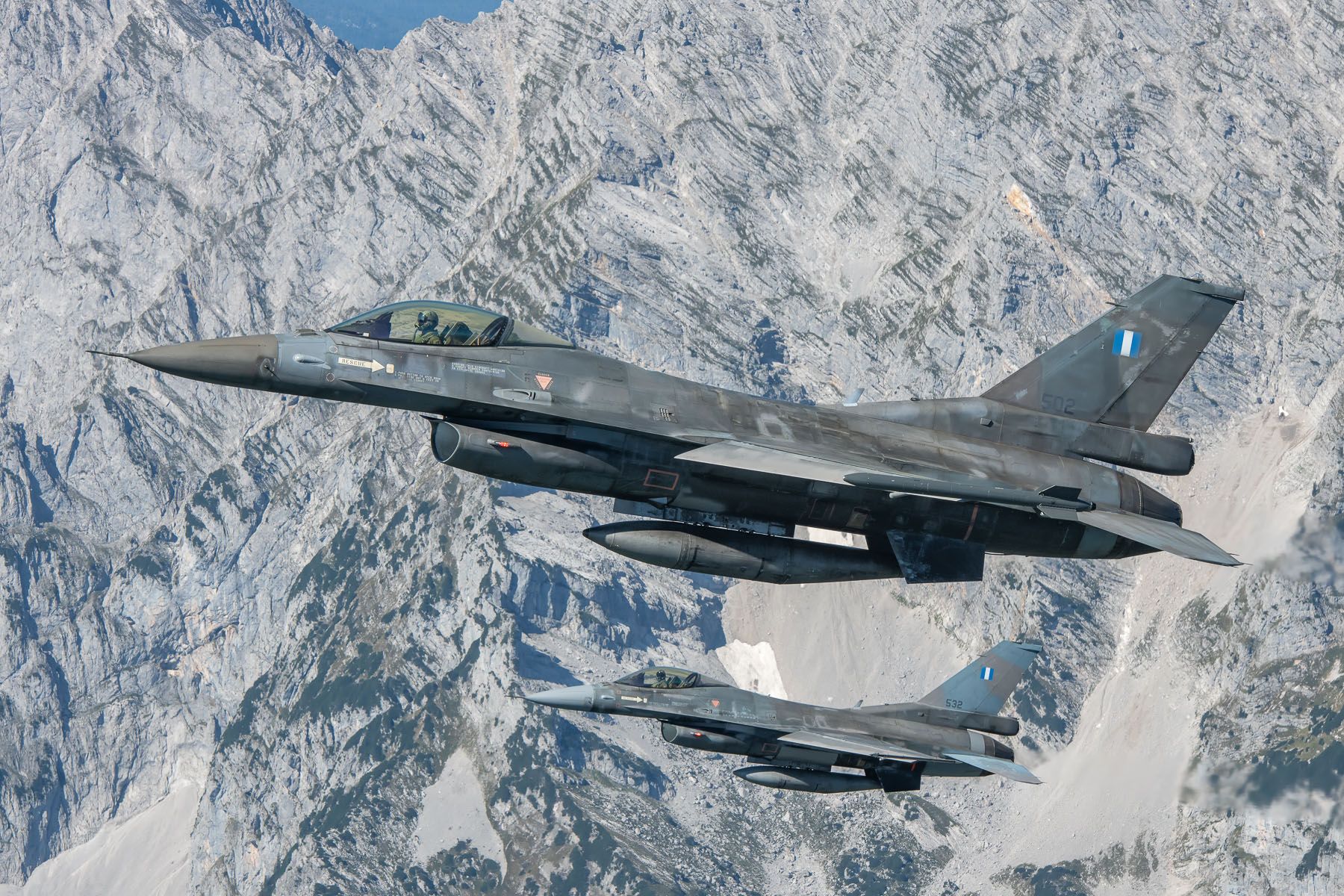
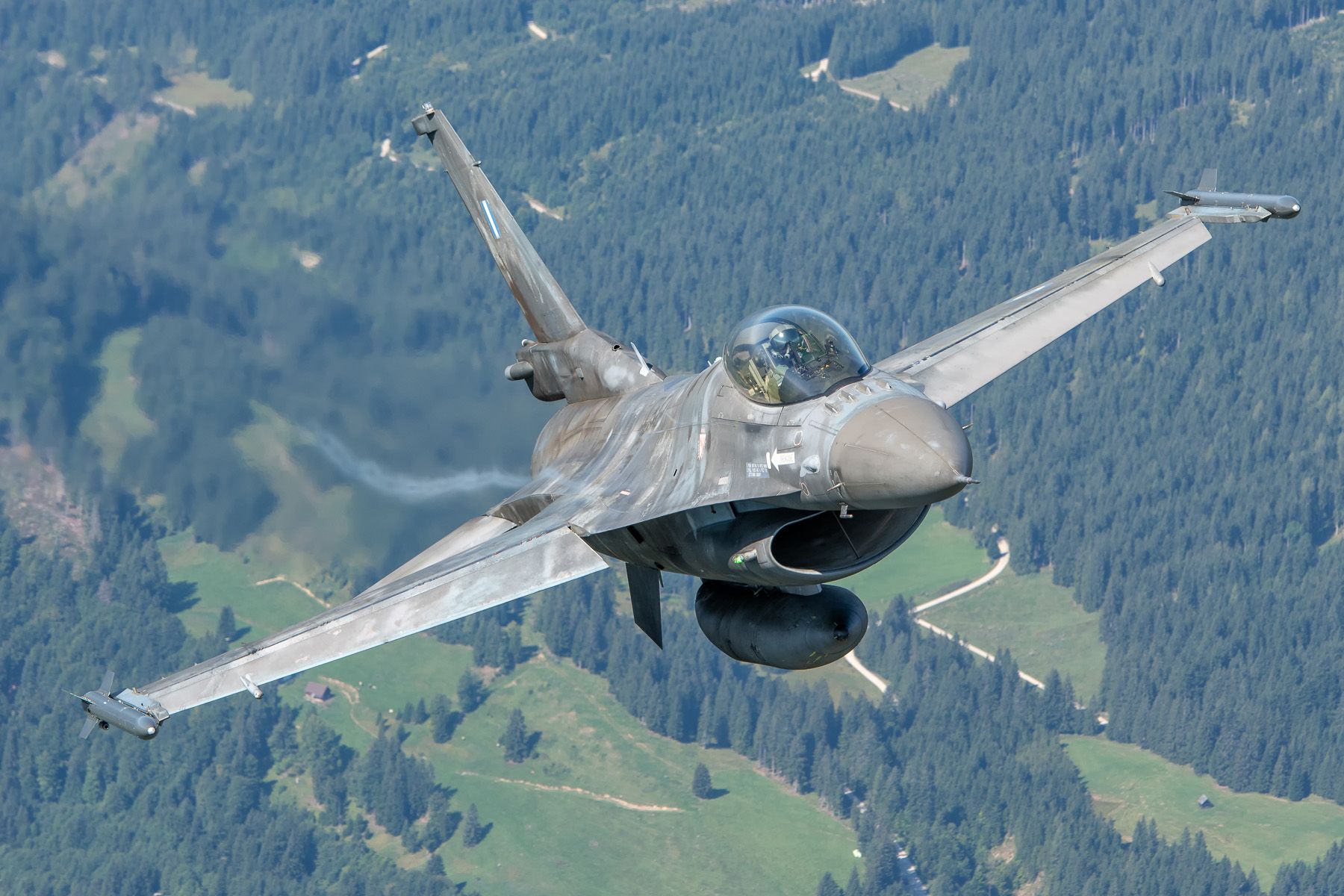
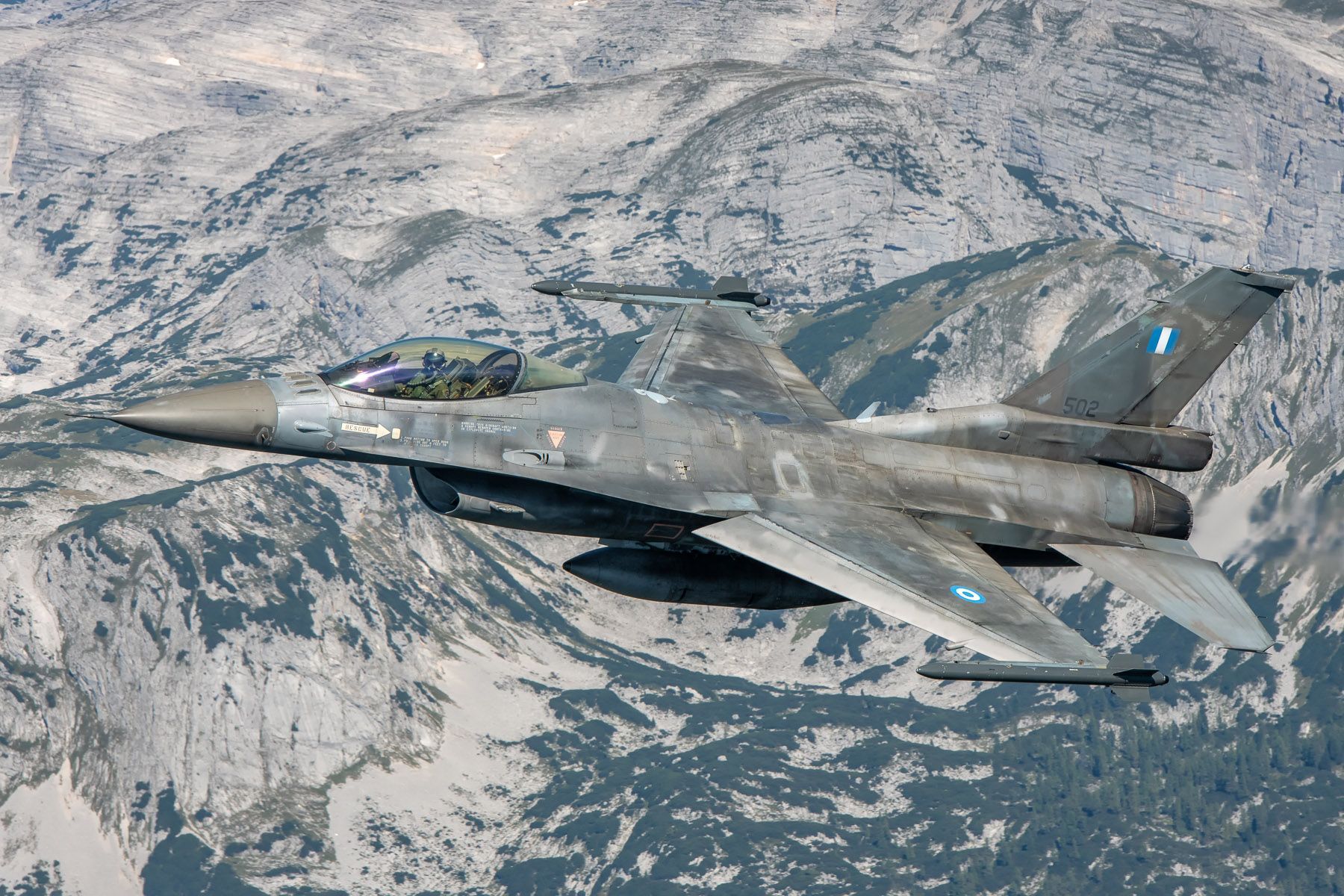
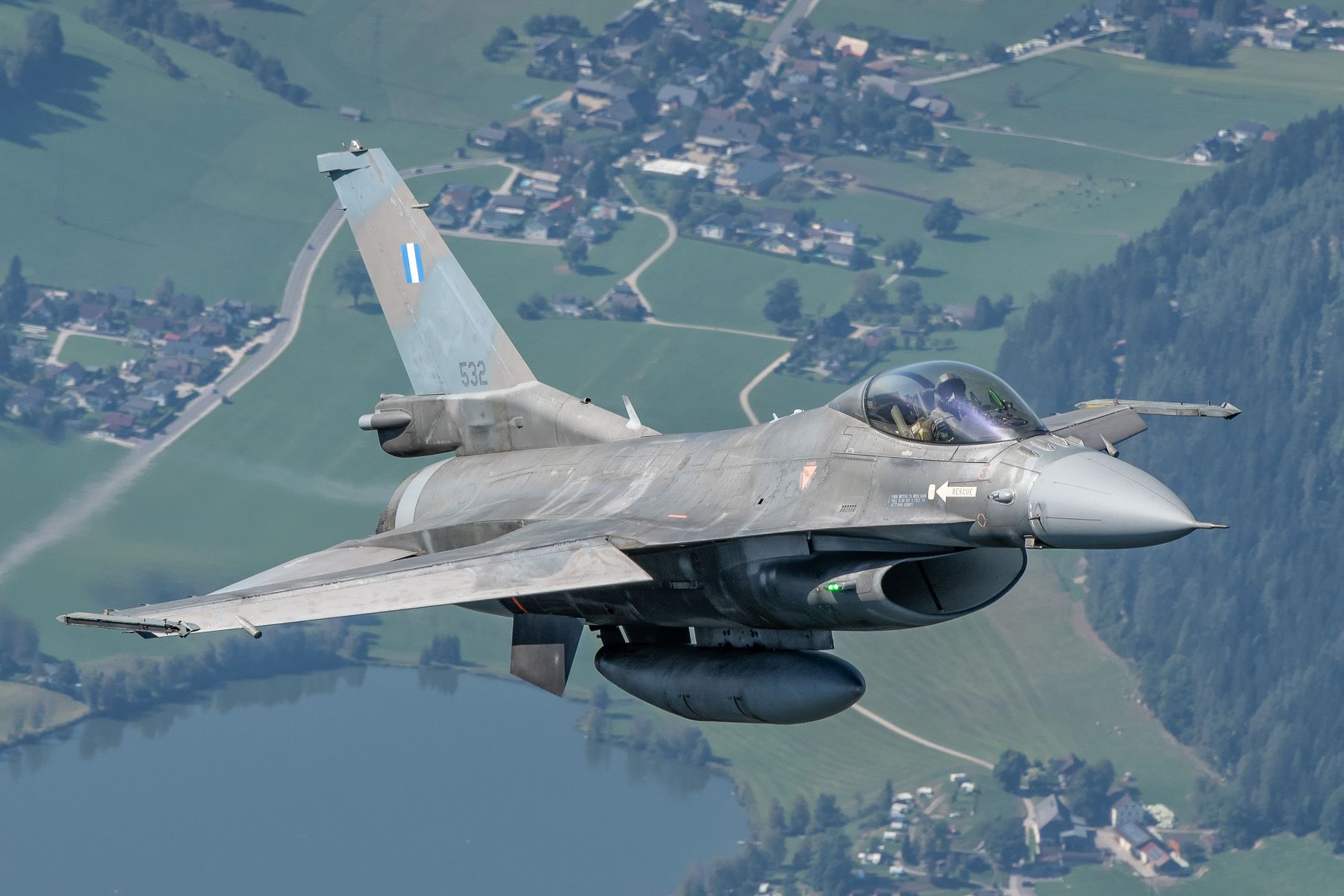
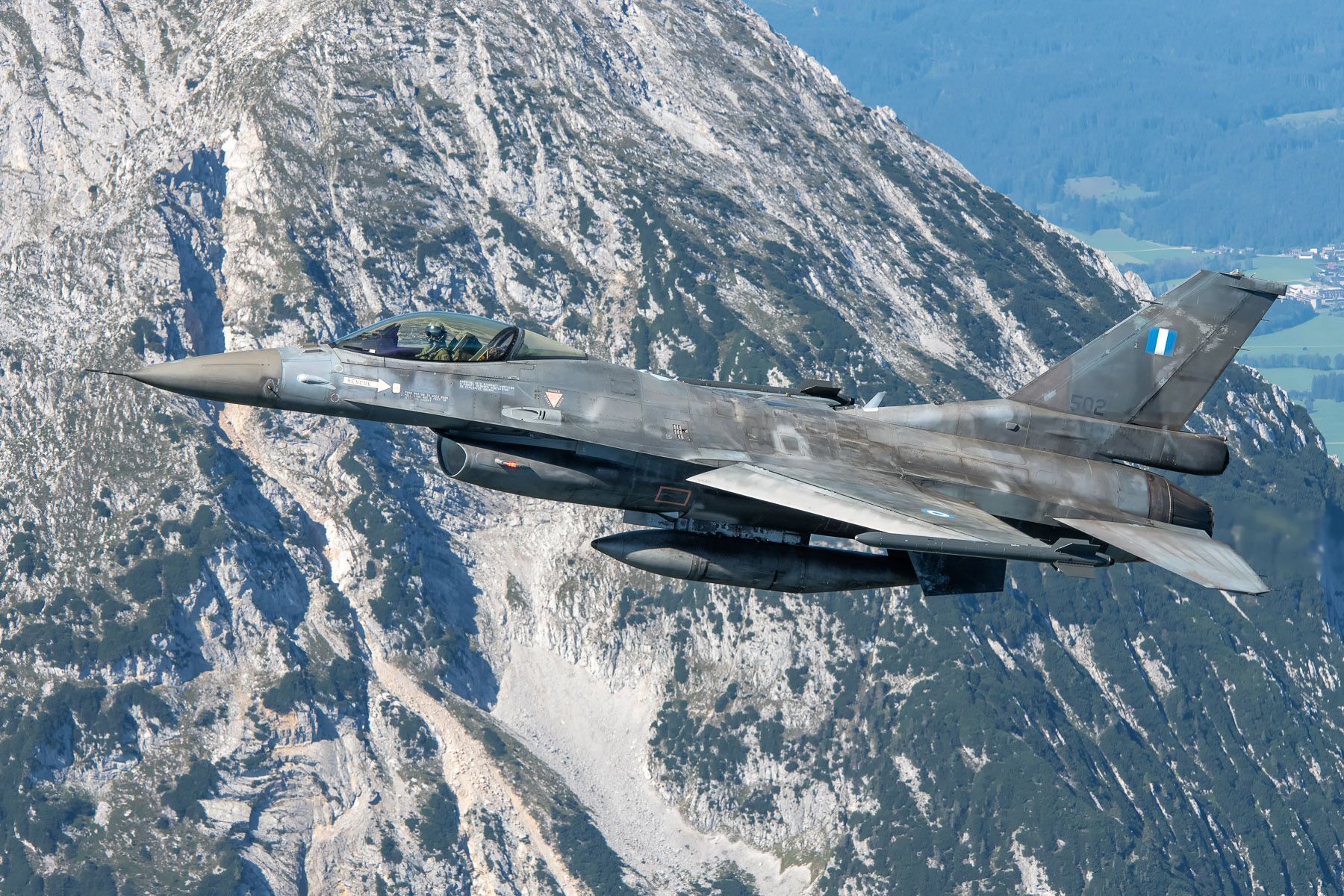
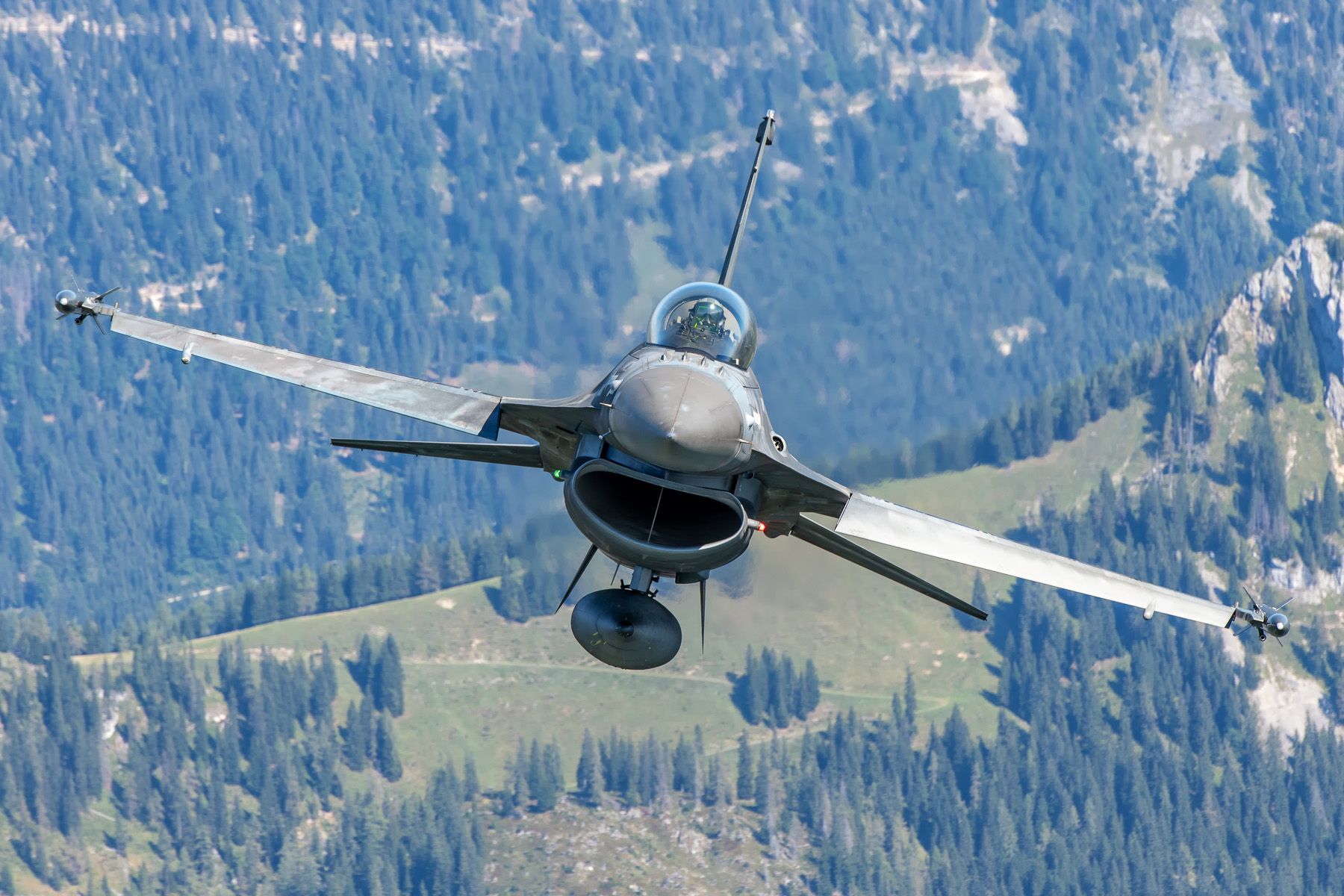
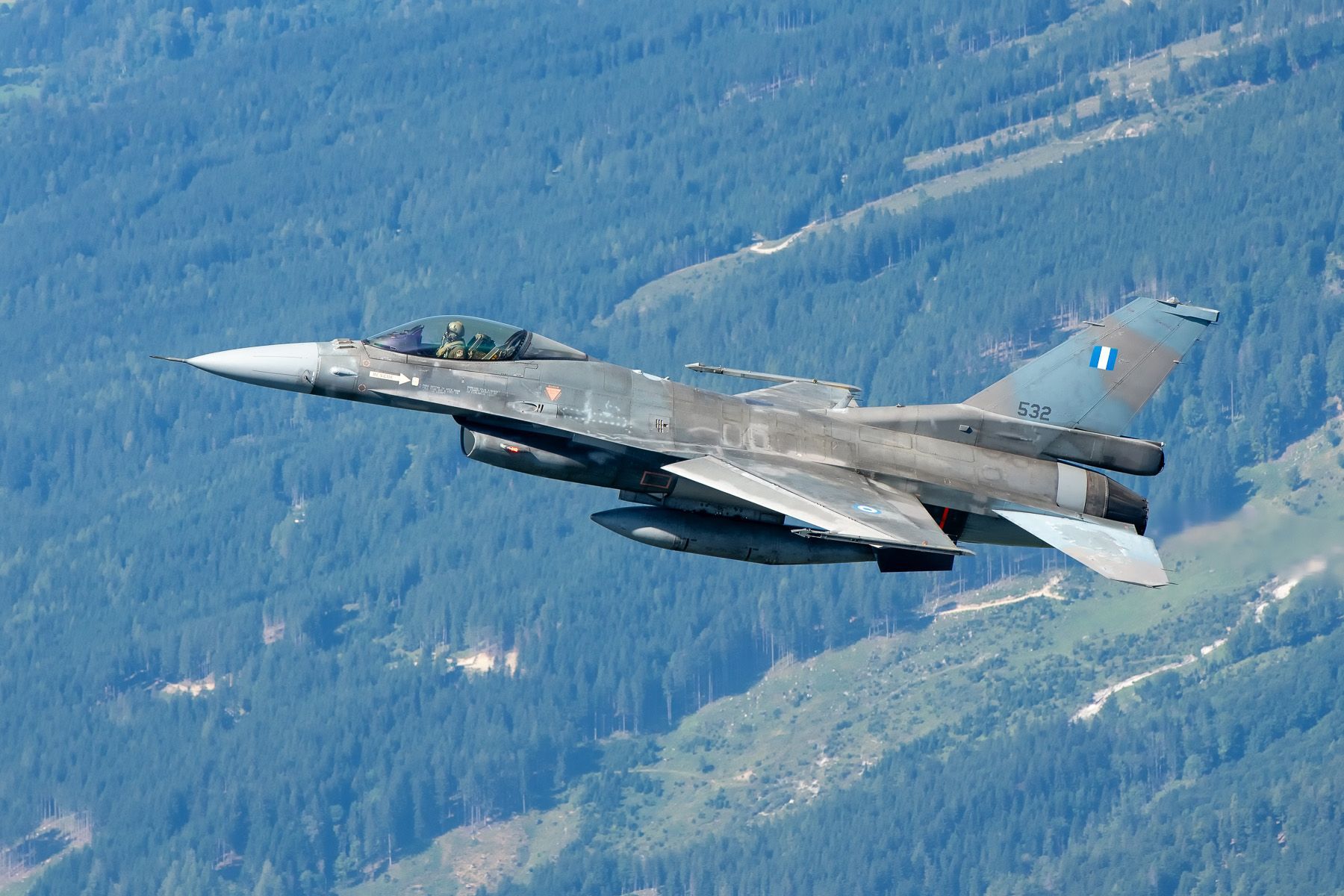
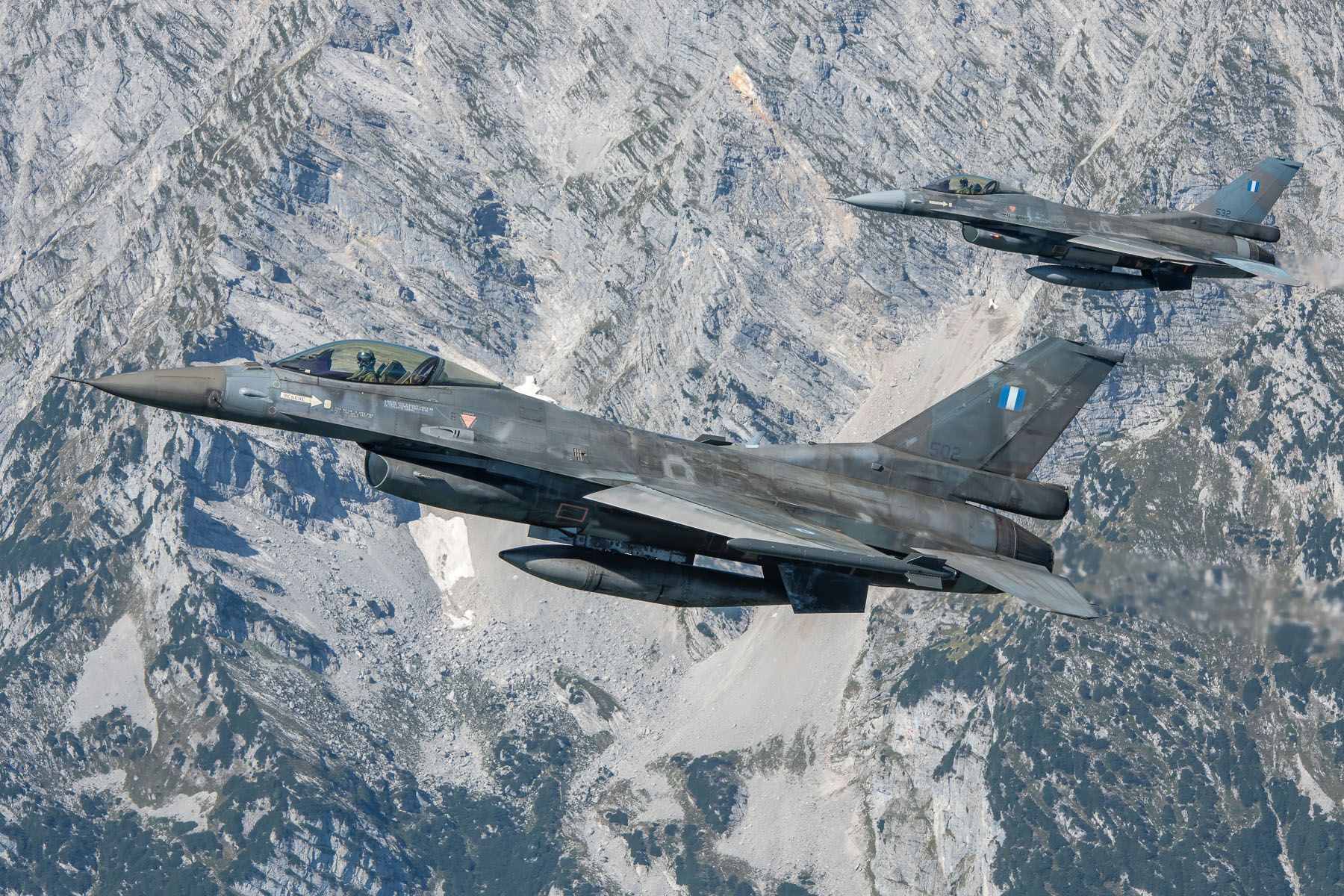
Greek Viper History
The Hellenic Air Force has operated the Lockheed-Martin F-16C/D since 9 January 1989 (at that time, still manufactured by General Dynamics). On that day, the first Greek Fighting Falcon unit 330 Mira at Nea Anghialos air base commenced their first Viper duties. Deliveries had already started in November 1988, and until October 1989 some 34 F-16C and 6 F-16D Block 30 aircraft would arrive, also allowing 346 Mira to be activated flying the new hardware. The order for this first series was signed in November 1984 in a contract known as Peace Xenia I. For the upcoming years, 330 Mira would also act as the type’s operational conversion unit. At a later stage, 346 Mira would relocate to Larissa air base where it disbanded in 2011, allowing the air force to concentrate all remaining Block 30 aircraft with 330 Mira.
A follow-up contract called Peace Xenia II would follow in 1993, covering 32 F-16C and 8 F-16D Block 50 aircraft equipped with LANTIRN targeting and navigation systems. Deliveries to Nea Anghialos started mid-1997 where these aircraft were taken on charge by both 341 and 347 Mira, replacing these squadron’s older F-5s and A-7s, respectively.
To further modernise the air force, more new fighter aircraft were sought. After considering and evaluating several types such as the Boeing F-15H Eagle, Dassault Mirage 2000-5 and Eurofighter Typhoon, Greece once again awarded a contract to Lockheed Martin for additional F-16s. Peace Xenia III was signed in June 2000 for the acquisition of 50 F-16C/D Block 52 while the attached option for 10 extra aircraft was confirmed in September 2001. The 40 single-seat and 20 dual-seat aircraft delivered from 2002 till 2004 can be fitted with CFTs (Conformal Fuel Tanks). The first Block 52 Vipers entered service with 340 Mira at Souda replacing their A-7s. The unit was followed by 343 Mira at the same location, allowing their F-5As to be retired. The third squadron to be equipped with Block 52s was 337 Mira at Larissa, operating the new aircraft from 2007.
The last series of Greek Fighting Falcons arrived in 2009 & 2010. Peace Xenia IV consists of 30 F-16 Block 52 (20 singles and 10 duals) and includes various features such as Joint Helmet Mounted Cueing Systems, Link 16 digital datalink terminals and ground stations as well as APX-113 Mode 5 IFF transponders. This final delivery allowed both 335 and 336 Mira at Araxos to turn in their A-7 Corsairs.
In short, the Hellenic Air Force took delivery of no less than 170 F-16s (126 C and 44 D). Of these, 85 will be upgraded to the F-16V(iper) or Block 72V variant. This modification contract was signed in April 2018, and this version includes an active electronically scanned array radar, a new mission computer and electronic warfare suite, an automated ground collision avoidance system and several other improvements. The upgrade works are carried out by the Hellenic Aerospace Industry (HAI). Some 12 aircraft will be modified annually, and the first have meanwhile re-entered service. ■
